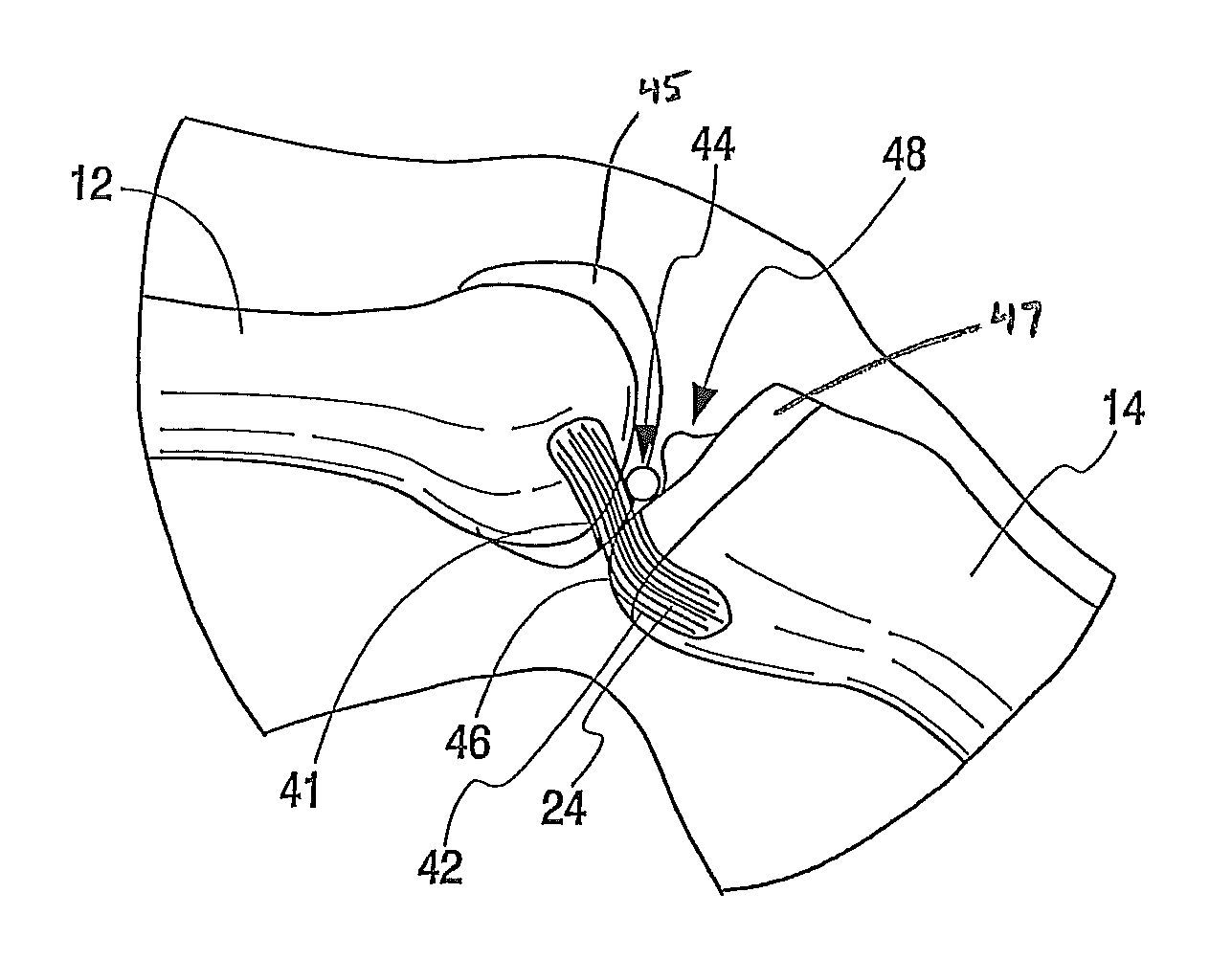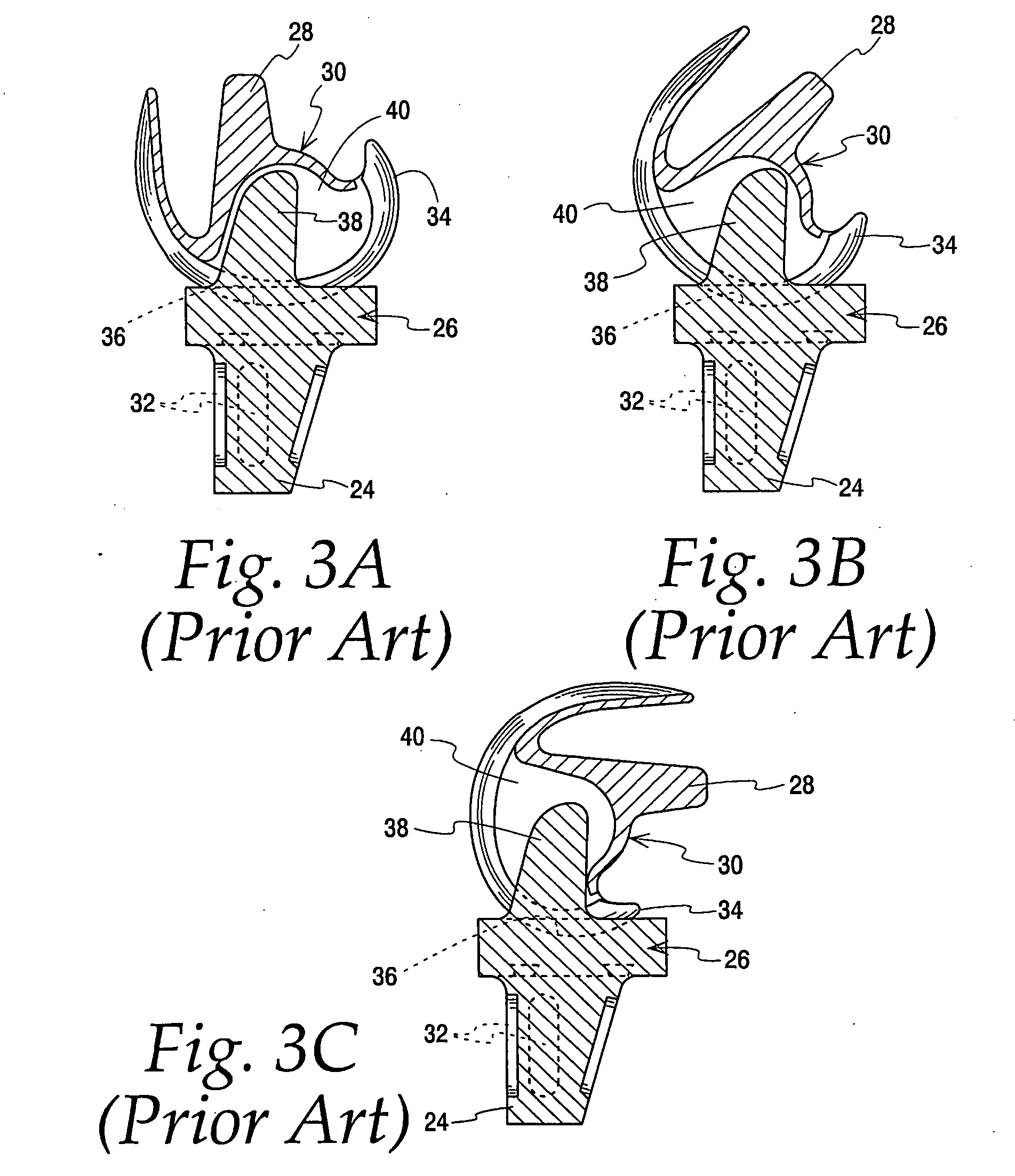PCL retaining ACL substituting TKA apparatus and method
a technology of retaining acl and retaining acl, which is applied in the field of total knee arthroplasty (“ tka, apparatus and method of knee replacement surgery”), can solve the problems of significantly less success, significantly normal functional improvement in joint mobility, and knee replacement surgery, and achieves normal range of motion and function. , the effect of more functional
- Summary
- Abstract
- Description
- Claims
- Application Information
AI Technical Summary
Benefits of technology
Problems solved by technology
Method used
Image
Examples
Embodiment Construction
[0026]Turning now to the Figures, FIG. 1 is illustrative of a human knee joint 10. The knee is a lower extremity joint connecting the femur 12 and the tibia 14, with the patella 16 riding the joint as the knee bends. Between the bones of the femur 12 and tibia 14 is a structure made of cartilage, called the meniscus 18. The meniscus is a C-shaped piece of tissue attached to the tibia via the meniscal ligament 20 and helps to protect the joint and allows the bones to slide freely on each other. The bones themselves are coated with a different type of cartilage called hyaline cartilage which forms the joint surface on each bone respectively. There are two cruciate ligaments located in the center of the knee joint. The anterior cruciate ligament (ACL) 22 and the posterior cruciate ligament (PCL) 24 (see also FIGS. 2A and 2B) are the major stabilizing ligaments of the knee. The ACL 22 prevents the femur 12 from sliding backwards on the tibia 14 (or the tibia sliding forwards on the femu...
PUM
 Login to View More
Login to View More Abstract
Description
Claims
Application Information
 Login to View More
Login to View More - R&D
- Intellectual Property
- Life Sciences
- Materials
- Tech Scout
- Unparalleled Data Quality
- Higher Quality Content
- 60% Fewer Hallucinations
Browse by: Latest US Patents, China's latest patents, Technical Efficacy Thesaurus, Application Domain, Technology Topic, Popular Technical Reports.
© 2025 PatSnap. All rights reserved.Legal|Privacy policy|Modern Slavery Act Transparency Statement|Sitemap|About US| Contact US: help@patsnap.com



